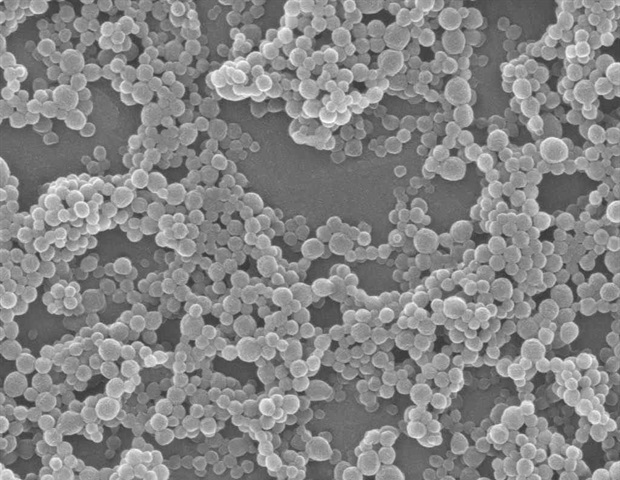
Scientists from the Center for Science and Education & Smart Materials and Biomedical Applications led by Kateryna Levada together with colleagues from the Baltic Federal University Baltic Immunology and Cell Biotechnology Center conducted an interdisciplinary study on the development of a new method for the treatment of leukemia using nanomaterials.
The scientists analyzed how magnetic nanoparticles can be manipulated in in vitro settings to achieve a selective antitumor effect. The method is based on the unified action of nanoparticles and permanent magnetic fields on human tumor cells.
Leukemia (lymphoblastic leukemia) is the most common type of blood cancer in children and adolescents. This cancer affects bone marrow and leads to pollution of the human immune system. It accounts for 75-80% of acute leukemias, which also affect adults. Conventional methods for the treatment of leukemia are based on chemotherapy. But chemotherapy is expensive and toxic not only for cancer cells, but also for the whole body. To overcome these limitations, new approaches using nanomaterials are needed. In their work, the researchers used magnetic nanoparticles and static magnetic fields.
For the study, the scientists used magnetic iron oxide nanoparticles, as they are a promising basis for the development of biochemical applications. Such materials are biodegradable and can be modified in the future, for example, with fluorescent labels (for microscopic methods), as well as covered with different shells.
The development of targeted antitumor drugs seeks to study the effects of the substance used not only on cancers, but also on healthy cells of the body. First line of cells – mononuclear cells of human blood, serving as a model of healthy cells. The second is human lymphoblastic leukemia cells, a cell line under the specific name “Jurkat”.
Therefore, the scientists simultaneously studied the effect of magnetic fields and nanoparticles on healthy human cells and cancer. Permanent magnets, placed in a stationery position in culture plates, were used as sources of the magnetic field. They supported the magnets to prevent any movement during experiments.
After all the necessary parts had been placed, the plates with the cells were placed on top of the plates – this ensured an even distribution of magnetic fields on the surface of the plates containing the wells with the cells.
The results of the study showed that the combined effect of nanoparticles and magnetic fields after 24 ha treatment affected Jurkat cells – their functional capacity was reduced. Iron oxygen has been found to penetrate cancer cells and cause reactive oxygen species to be released, disrupting cellular processes. Scientists were particularly interested in the fact that healthy cells (human mononuclear blood cells) were not transplanted by this “cure” in any way.
Thus, the future use of iron oxide-based nanoparticles with optimal properties (shape, size, chemical composition) will allow therapeutic effect to be achieved by generating reactive oxygen species in cancer cells. The difference in the vulnerability of healthy body cells and tumor cells to the effects of nanoparticles gives selective therapeutic effect and, therefore, reduces side effects. “
Larisa Litvinova, MD, Director, Center for Cellular Psychology and Biotechnology, Immanuel Kant Baltic Federal University
“The interdisciplinary approach in this study, that is, the collaboration of scientists from different scientific fields, allowed us to demonstrate the interaction of these nanomaterials with cell cultures and, therefore, reveal the potential appeal content of our developments.
We are also very grateful to our colleagues – IKBFU Center for Cellular Immunology and Biotechnology, led by Larisa Litvinova, for an exciting and fruitful joint scientific project, “said Kateryna Levada, PhD, Head of Bio Applications Laboratory Medical and Educational Center “Smart Materials and Biomedical Applications”.
Source:
Immanuel Kant Baltic Federal University
Magazine Reference:
Pshenichnikov, S., et al. (2021) Control of oxidative stress in Jurkat cells as a model of leukemia treatment. Journal of Magnetism and Magnetic Materials. doi.org/10.1016/j.jmmm.2020.167623.